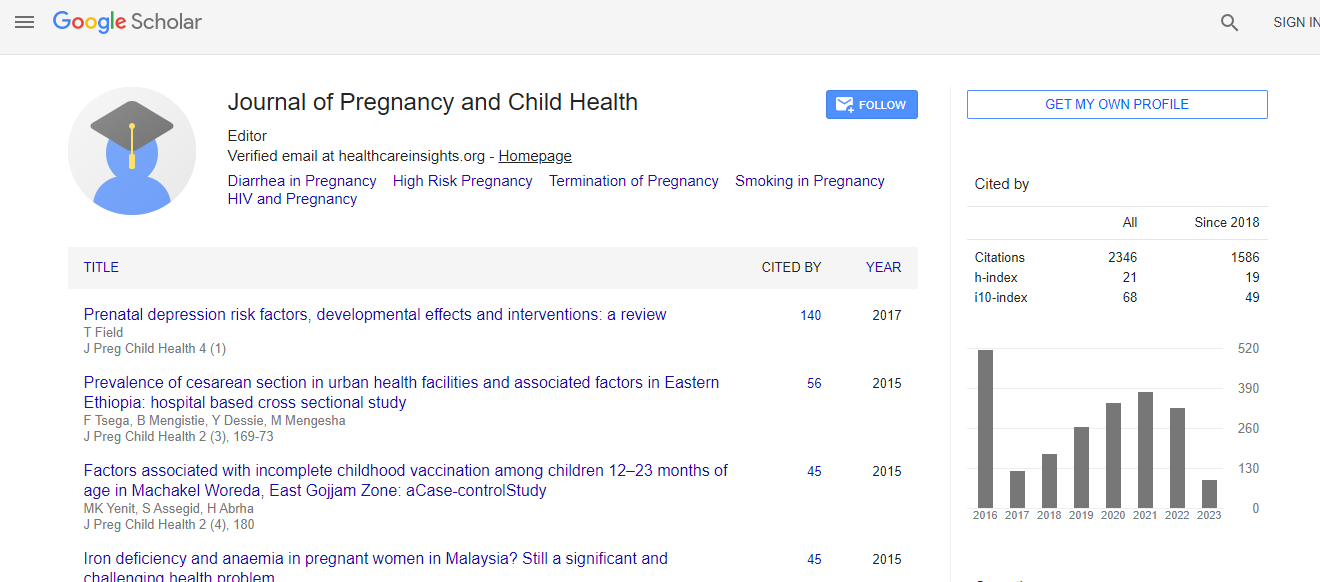Research Article
Factors Associated With Anemia in Pregnant Women in 2014 in Parakou
| Salifou K1, Obossou AAA1*, Sidi IR1, Hounkpatin Bib2, Hounkponou Anf1, Vodouhe M1, Batchaneng NU1 and M Perrin RX2 | |
| 1Mother & Child Department, Faculty of Medicine; University of Parakou, Republic of Benin | |
| 2Faculty of Health Sciences, University of Abomey-Calavi, Republic of Benin | |
| Corresponding Author : | Awadé Afoukou Achille Obossou Obstetrician- Gynecologist, Assistant Professor Faculty of Medicine, University of Parakou Republic of Benin Tel: 229-95 85 32 79/97 06 78 52 E-mail: awadefr2000@yahoo.fr |
| Received March 16, 2015; Accepted June 29, 2015; Published July 04, 2015 | |
| Citation: Salifou K, Obossou AAA, Sidi IR, Bib H, Anf H, et al. (2015) Factors Associated With Anemia in Pregnant Women in 2014 in Parakou. J Preg Child Health 2: 174. doi: 10.4172/2376-127X.1000174 | |
| Copyright: © 2015 Salifou K, et al. This is an open-access article distributed under the terms of the Creative Commons Attribution License, which permits unrestricted use, distribution, and reproduction in any medium, provided the original author and source are credited. | |
Abstract
Objective: Determine the prevalence and factors associated with anemia among pregnant women in Parakou in 2014.
Method: It was a descriptive cross-sectional study with analytical purpose. It had been conducted from July 1 to September 30, 2014. The included targets were pregnant women attending antenatal care in three public maternities of the District of Parakou.
Results: A total of 352 women were included in our study. The mean age was 5.9 ± 25.7years. The most represented age group was the one between 20 and 24 years (29.5). The Bariba ethnic group was the most represented (30.7%). The largest religion was Christianity (49.1%). They were married in 96.3% of the cases and not educated in 54.0% of cases. More than 79.5% of them were unemployed or poorly paid. One hundred and forty two female patients (40.3%) were anemic, including 56.3% (95% CI = [47.8 to 64.6] %) and 43.7% (95% CI = [35.4 to 52.2] %) suffering from moderate and mild anemia respectively. No severe anemia was recorded. Hb level was between 7.3 and 16.0g / dl with a mean concentration of 11.6 g / dl and 1.7 ± Hct level between 22 and 48% with an average estimated at 34.4% ± 5.1). 2. Risk factors related to socio-demographic characteristics were Fulani ethnic group, grand multiparity, low educational level and socioeconomic conditions. During pregnancy, the use of mosquito net (p <0.001) reduced anemia prevalence in pregnant women while consumption of Calabar limestone (<0.001) contributed to it. Women were more exposed to anemia in the third quarter of pregnancy (<0.001) than in the first and second quarters. There was a significant association between occurrence of anemia and lack of consumption of fruits and vegetables at least once a day (²χ = 12.3 and p <0.001).

 Spanish
Spanish  Chinese
Chinese  Russian
Russian  German
German  French
French  Japanese
Japanese  Portuguese
Portuguese  Hindi
Hindi 
